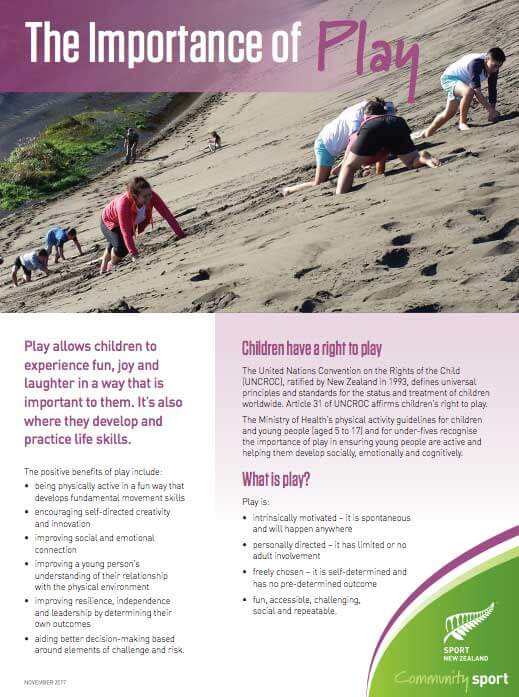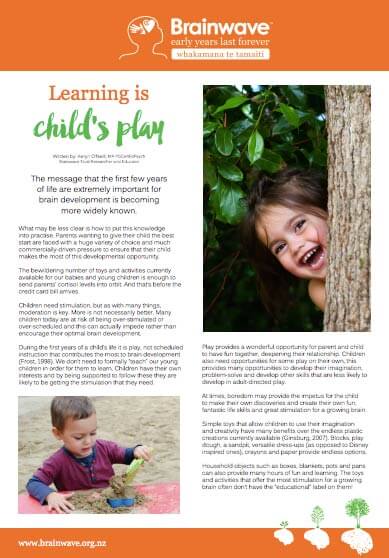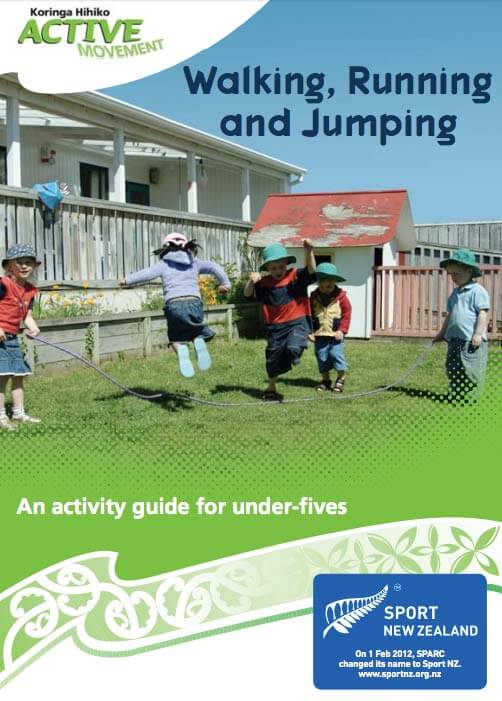Wishing everyone happy holidays and a joyful New Year from the Healthify team. Don't forget to Slip, Slop, Slap and Wrap!
Active play for under-5s
Key points about active play for under-5s
- Movement through play helps young children to develop their physical, social, thinking and emotional abilities.
- Children under 5 years old need active play every day, including opportunities to explore outdoors, to encourage their creativity and imagination.
- Regular active play, limited sitting and enough good quality sleep are key to a child’s healthy growth and development.

By including physical play regularly in their day, you can help limit the amount of time your child spends sitting. Some of the things children learn through moving cannot be taught or learned from sitting still or watching screens. Parents are often misled into thinking that colourful images on TV programmes and other electronic devices are good for a child’s mental development, but even though children will naturally be attracted to these, it does not mean they're good for them. When children are physically active during their play, they use all 5 senses to learn about the world around them.
Some ideas to help your child to sit less include:
- limiting the use of equipment that restricts movement, such as baby walkers, high chairs and activity gyms
- not leaving children to sleep in capsules and car seats – they should be used for transportation only
- discouraging screen time for children under 2 years and limiting screen time to less than 1 hour every day for children aged 2 years or older
- replacing TV time with reading time, story time or doing jigsaw puzzles together
- encouraging toddlers and pre-schoolers to walk instead of being in a pushchair.
Provide fun activities that support physical, social, emotional, cognitive and spiritual growth. Aim for at least 3 hours every day for toddlers and pre-schoolers, spread throughout the day.
Some ideas include:
- encouraging babies to reach, grasp and hold by placing toys just out of their reach
- letting infants pull themselves up on and move around objects, such as coffee tables
- playing interactive games with toddlers, such as Simon Says
- encouraging play in an indoor playhouse made from cardboard boxes or chairs and bed sheets, or an outdoor playhouse made from old wood, sticks and grass
- playing hide and seek (indoors or outdoors).
Children need to get enough sleep to support their growth and development. The amount of sleep they need changes as they get older.
- Babies (birth to 3 months) should have 14 to 17 hours of good quality sleep every day, including daytime sleeps.
- Infants (4 to 12 months) should have 12 to 15 hours of good quality sleep every day, including daytime sleeps, which will tend to decrease as they get closer to 12 months old.
- Toddlers (1 to 2 years) should have 11 to 14 hours of good quality sleep every day, including at least 1 daytime sleep.
- Pre-schoolers (3 to 4 years) should have 10 to 13 hours of good quality sleep every day, with consistent bedtimes and wake-up times.
Some ways to help your child to sleep well include:
- encouraging night-time sleep in babies
- giving plenty of cuddles and respond to physical and emotional cues when your baby or infant cries
- developing a consistent (but flexible) daytime and bedtime schedule – this could include a warm bath, a massage, dressing in bed clothes, brushing teeth and reading a story
- avoiding any TV or other electronic devices or bright lights for at least 1 hour before bed
- encouraging sleep by singing oriori (lullaby) as a way of sharing pūrākau (ancestral knowledge)
- promoting independent sleep by putting toddlers to bed when they are tired but not asleep.
Active movement activity guides for children 0–5 years(external link) Sport NZ
Physical literacy(external link) Sport NZ, 2015
Brainwave Trust Aotearoa(external link)
Under 5s(external link) Sport Wellington, NZ
Raising Children(external link) NZ
Resources
Te Pihinga 3 [PDF, 11 MB] Te Pihinga 3 is a guide for the journey of whānau and their growing pēpi from 13 to 18 months old. Te Pihinga offers simple whānau tikanga for this stage of rapid growth. Takai, NZ, 2023
Te Kōhuri 1 [PDF, 10 MB] Te Kōhuri 1 is a guide for the journey of whānau and their growing tamaiti from 19 months to 2 years old. Te Kōhuri offers simple whānau tikanga for this stage. Takai, NZ, 2023
Te Kōhuri 2 [PDF, 12 MB] Te Kōhuri 2 is a guide for the journey of whānau and their growing tamaiti from 2 to 2 and a half years old. Te Kōhuri offers simple whānau tikanga for this stage. Takai, NZ, 2023
Te Kōhuri 3 [PDF, 10 MB] Te Kōhuri 3 is a guide for the journey of whānau and their growing tamaiti from 2 and a half to 3 years old. Te Kōhuri offers simple whānau tikanga for this stage. Takai, NZ, 2023
Te Māhuri [PDF, 11 MB] Te Māhuri is a guide for the journey of whānau and their growing tamaiti from 3 to 5 years old. Te Māhuri offers simple whānau tikanga as tamariki become more independent. Takai, NZ, 2023
The importance of play(external link) Sport NZ, 2017
Learning is child's play (external link)Brainwave Trust Aotearoa, NZ, 2020
Physical activity for early years (birth – 5 years) (external link)GOV UK, 2011
Tummy time, rolling & crawling (external link)Sport NZ, 2008 English(external link), te reo Maori(external link)
Walking, running & jumping – An activity guide for under-fives(external link) Sport New Zealand English(external link), te reo Māori(external link)
Catching, throwing, and kicking(external link) Sport NZ, 2008 English(external link), te reo Māori(external link)
Upper body development – climbing, hanging, and swinging – an activity guide for under-fives(external link) Sport NZ, 2008
The importance of play(external link) Sport NZ, 2017
Tots, toddlers, and TV – the potential harm(external link) Brainwave Trust Aotearoa, NZ, 2015
Sit less, move more, sleep well – active play guidelines for under-fives – owhaowha (infants) 3–12 months(external link) Ministry of Health, NZ, 2018 English(external link), te reo Māori(external link)
Sit less, move more, sleep well: Active play guidelines for under-fives: Tamaiti pūhou (babies) 0-3 months(external link) Ministry of Health NZ, 2018 English(external link), te reo Māori(external link)
Sit less, move more, sleep well – active play guidelines for under-fives – tamaiti (pre-school) 3-4 years(external link) Ministry of Health NZ, 2018 English(external link), te reo Māori(external link)
Sit less, move more, sleep well – active play guidelines for under-fives – tamaiti nohinohi (toddlers) 1-2 years(external link)
Ministry of Health NZ, 2018 English(external link), te reo Māori(external link)
References
- Sit less, move more, sleep well – active play guidelines for under-fives(external link) Ministry of Health, NZ, 2017
Brochures

Sport NZ, 2017

Brainwave Trust Aotearoa, NZ, 2020
Credits: Healthify Editorial Team
Reviewed by: Amanda Taylor, Community Sport Advisor, Sport Wellington
Last reviewed:
Page last updated:






